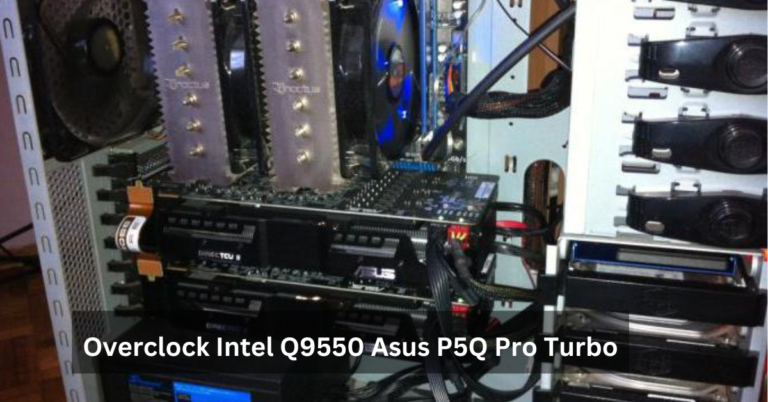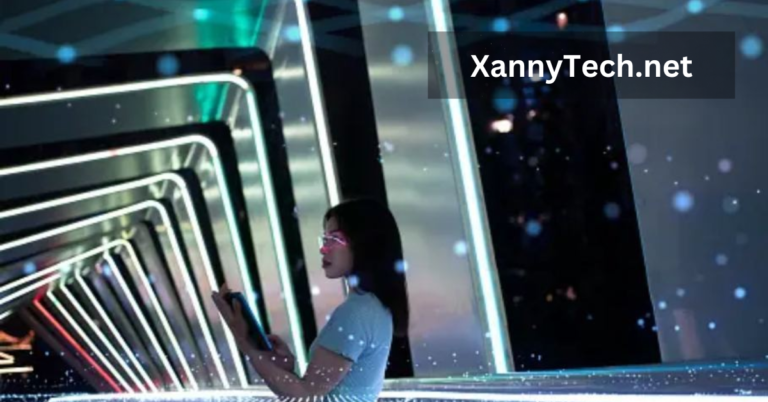Popover PrimeVue Explained: A Guide to Custom UI & Features
In modern web development, creating dynamic and interactive user interfaces (UI) is crucial for offering a seamless experience to users. One popular tool for enhancing UI functionality is PrimeVue, a robust UI component library for Vue.js. Among the many useful components provided by PrimeVue, the Popover (or OverlayPanel) stands out for its ability to display contextual information in a clean, non-intrusive way.
This article will guide you through everything you need to know about using, customizing, and troubleshooting Popover PrimeVue. From installation and basic usage to advanced features and best practices, we’ll cover it all to help you make the most out of this powerful UI component.
What is a Popover PrimeVue?
In PrimeVue, a Popover is a UI component that displays additional content when triggered by a user interaction, typically through a click or hover event. This content is often used to provide more details or supplementary information without taking the user away from the current page. The Popover component can be a great way to enhance usability, particularly in dashboards, forms, and e-commerce applications.
PrimeVue’s Popover is implemented using the OverlayPanel component, which can be customized in various ways to match the design and functionality needs of your application. Whether you want to show tooltips, contextual help, or quick access buttons, the Popover provides an elegant solution.
Popovers are integral to a well-designed user interface (UI). They allow designers and developers to present information in a context-sensitive manner, giving users access to additional details only when needed. This helps to keep the UI clean and uncluttered, improving overall user experience (UX).
For example, imagine a form with numerous fields and complex instructions. Instead of overcrowding the interface with static content, a Popover can be used to display tooltips or descriptions when the user hovers over or clicks on a specific field. This design approach reduces cognitive overload while enhancing usability.
PrimeVue is one of the most popular UI libraries for Vue.js, offering a collection of ready-to-use components such as buttons, forms, data tables, charts, and more. Built specifically for Vue.js, PrimeVue provides seamless integration with Vue-based applications, making it easier to build modern, dynamic, and feature-rich interfaces.
The library is widely adopted due to its comprehensive set of features, ease of use, and strong community support. With its Popover component, developers can enhance their applications with minimal effort, allowing them to focus on building business logic rather than creating custom UI components from scratch.
Getting Started with Popover PrimeVue
Before you can start using the Popover component, you need to install PrimeVue and the necessary dependencies. You can add PrimeVue to your Vue.js project using npm or yarn.
By default, PrimeVue’s Popover component includes a small arrow (caret) that points to the element that triggered the popover. While this is useful for indicating the connection between the popover and the triggering element, some developers may prefer a cleaner design without the caret.
Customizing the appearance of your popovers is straightforward with CSS. You can modify elements such as the background color, padding, borders, and text styles to match your app’s theme.
When designing popovers, it’s important to consider factors such as:
- Clarity: Ensure that the content within the popover is clear and concise.
- Context: Provide relevant information that makes sense in the current context of the user’s interaction.
- Size and Positioning: Keep the popover appropriately sized and ensure that it doesn’t overlap critical UI elements.
By following these best practices, you can create an intuitive and seamless experience for users interacting with your popovers.
Positioning and Alignment of Popovers
By default, the Popover will position itself relative to the triggering element. This is usually fine for most use cases, but there may be instances where you need to adjust the positioning based on screen size or specific design needs.
PrimeVue’s OverlayPanel component provides flexibility in positioning, allowing you to specify whether it should appear above, below, or to the sides of the target element.
Advanced Features and Functionality
Popovers can also contain dynamic content such as forms, images, or interactive elements. This is especially useful in applications where the popover serves as a quick form or interactive panel.
Popovers and tooltips are both used for displaying extra information, but they have different purposes and use cases. Tooltips are typically used for brief pieces of information that appear when a user hovers over an element. They are small and concise, usually offering one or two lines of text.
On the other hand, Popovers are more robust and can contain more complex content, such as forms, images, or detailed descriptions. Use a Popover when you need to display more substantial content or when the information requires user interaction (e.g., submitting a form or choosing options).
Popovers for Form Inputs and Validations
One of the most common use cases for popovers is to provide additional details about form inputs or validation messages. Instead of displaying long validation texts directly in the form, you can use popovers to show them only when necessary. This keeps the form clean and uncluttered, making the interface more user-friendly.
For instance, when a user is filling out a registration form and enters an invalid email address, a popover can appear next to the email field to explain the validation error. This provides a better user experience than traditional inline error messages.
Popovers are highly useful in dashboards and admin panels, where you often need to provide additional data, settings, or context to the user. For example, in a dashboard, you can display a popover that contains detailed information about a chart or metric when a user clicks on a data point.
By using popovers in this way, you can present rich content without overwhelming the user with too much information on the main screen.
In e-commerce websites, popovers can be used to display product details, promotions, or additional options when a user hovers over a product image or clicks on a button. This helps to keep the browsing experience smooth and interactive without navigating away from the current page.
Making Popovers Responsive
In today’s mobile-first world, ensuring that your popovers work seamlessly on mobile devices is crucial. Since mobile screens are smaller, positioning and content size must be carefully considered.
When designing popovers for mobile, you should consider the following strategies:
- Use Larger Click Targets: On mobile devices, the clickable areas should be large enough to accommodate touch interactions.
- Ensure Proper Spacing: Leave enough space around the popover to prevent it from interfering with other UI elements.
- Consider Touch Events: In addition to click and hover events, use touch start or touch end for triggering popovers on mobile devices.
It’s essential to test how your popovers behave on various devices and browsers. Testing ensures that the content is displayed properly, the positioning is accurate, and the popover is responsive to different screen sizes. Tools like Chrome Developer Tools or services like BrowserStack can help you test on various devices and browsers.
Performance Optimization and Best Practices
To improve the performance of your web application, you can lazy load popovers. Instead of loading the popover’s content immediately, load it only when it’s needed. This is especially useful if your popover contains heavy content like images or forms.
Lazy loading can be implemented by dynamically loading the content of the popover when the user triggers it. This reduces the initial load time of the page, enhancing the performance.
Sometimes, popovers can become misaligned or overflow outside of the viewport, especially when there are multiple nested containers or complex layouts. To address this, ensure that the popover is appended to the body and use appropriate CSS rules to constrain its size and position.
Conclusion
Popover Primevue (or OverlayPanel) component is an incredibly versatile tool for developers using Vue.js. Whether you’re displaying dynamic content, handling form inputs, or providing extra information on hover or click, popovers enrich the user experience while maintaining a clean and minimal interface.
Key aspects discussed in this guide include:
- The basic usage and installation of the popover component.
- How to customize popovers through CSS and add dynamic content.
- Handling trigger events like click, hover, and focus.
- The importance of responsive design and optimizing performance, particularly with lazy loading and lazy rendering techniques.
As web development continues to evolve, PrimeVue and its popover component will likely continue to improve. Expect new features like better accessibility support for users with disabilities, more flexible positioning options, and greater customization tools for building interactive, dynamic popovers. Integrating with other frameworks like Tailwind CSS will also help create even more visually appealing and responsive popover designs.
Frequently Asked Questions
What is a Popover PrimeVue?
A Popover PrimeVue is a component that displays additional information or interactive elements in a small, floating container. It appears when users interact with a UI element, such as a button, offering contextual help or extra functionality. The popover typically includes text, forms, or other elements, and can be customized in terms of design and behavior.
How do I remove the caret from a Popover PrimeVue?
To remove the caret (the small arrow) from a PrimeVue Popover, you can customize its appearance using CSS.
How do I customize the Popover appearance in PrimeVue?
You can style the Popover PrimeVue using CSS to change its colors, borders, shadows, or icons. You can also add custom themes and use Tailwind CSS for further customizations. For example, adjusting the padding, background color, and border-radius helps match the popover’s look to your application’s theme.
Can I trigger a Popover with both click and hover events in PrimeVue?
Yes, PrimeVue Popovers can be triggered by multiple events, including click, hover, and focus. By using Vue.js directives, you can bind the popover’s visibility to different events based on your UI requirements.
How do I make a Popover responsive in PrimeVue?
To ensure a PrimeVue Popover is responsive, use flexible units (like percentages or rem) for its width and positioning. Additionally, utilizing CSS frameworks like Tailwind CSS can simplify the creation of mobile-friendly designs. Testing across different screen sizes helps ensure a seamless experience across devices. You can adjust margins and padding for smaller screens to avoid overflow or misalignment.
Stay in touch to get more updates & alerts on UnFite! Thank you






